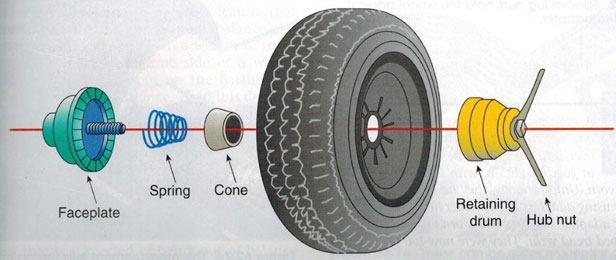Dynamic Wheel Balance Theory
The Dynamic Wheel Balance Theory is a concept primarily related to vehicle dynamics and wheel alignment. This theory revolves around the idea of maintaining the optimal balance of a vehicle’s wheels while it is in motion, which is crucial for smooth operation, safety, and performance.

Here’s a more detailed breakdown:
1. Basic Concept:
-
Dynamic Balance: Unlike static wheel balance, which ensures that the wheel and tire are evenly balanced when stationary, dynamic wheel balance addresses the balance when the vehicle is moving. This involves the distribution of weight and forces while the vehicle is in motion, including factors such as speed, road conditions, and load distribution.
-
Wheel Alignment: Proper alignment involves adjusting the angles of the wheels so that they are perpendicular to the ground and parallel to each other. Incorrect alignment can lead to uneven tire wear, poor handling, and reduced fuel efficiency.
2. Importance of Dynamic Wheel Balance:
- Smooth Ride: Proper dynamic balance helps in minimizing vibrations and ensures a smoother ride by reducing the oscillations and imbalances that can occur at high speeds.
- Enhanced Safety: A well-balanced wheel setup contributes to better handling and stability, which is crucial for safe driving, especially at high speeds or in adverse conditions.
- Longevity of Tires: Correct dynamic balance can reduce uneven tire wear, extending the lifespan of the tires and improving overall vehicle performance.
3. Factors Influencing Dynamic Wheel Balance:
- Speed: The forces on the wheels change with speed, affecting the balance. Dynamic balancing takes these forces into account to ensure stability.
- Load Distribution: The distribution of weight across the vehicle impacts wheel balance. This includes variations due to passenger and cargo load.
- Road Conditions: Uneven road surfaces can affect wheel balance dynamically, requiring adjustments to maintain stability and comfort.
4. Methods and Technologies:
- Balancing Machines: Modern balancing machines can dynamically balance wheels by simulating road conditions and adjusting for imbalances accordingly.
- On-Vehicle Balancing: Some systems allow for real-time balancing adjustments while the vehicle is in motion, using sensors and active balancing mechanisms.
In essence, the Dynamic Wheel Balance Theory emphasizes the need to address wheel balance not just when the vehicle is stationary but throughout its entire range of motion. This ensures optimal performance, safety, and comfort.